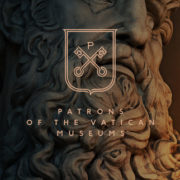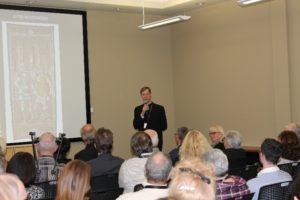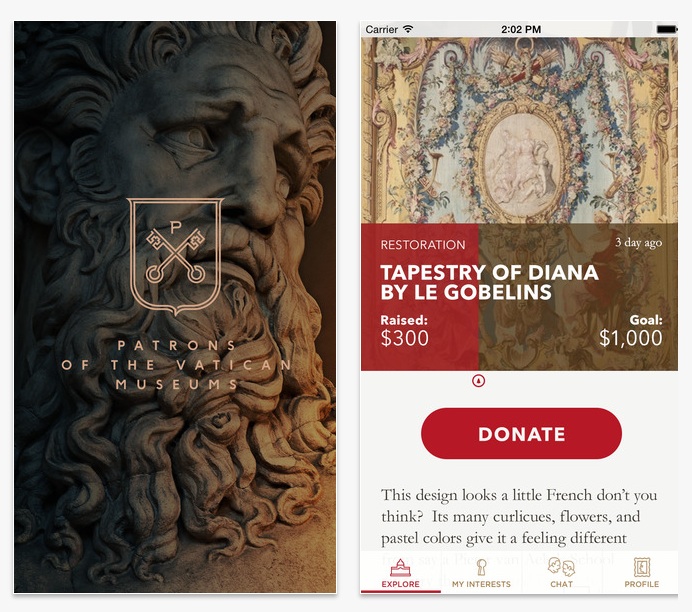Betraying Bequests and Selling Art to Pay…Nonexistent Bills?: Thomas Cole’s “Portage Falls” Still at Risk.
Ruth Osborne
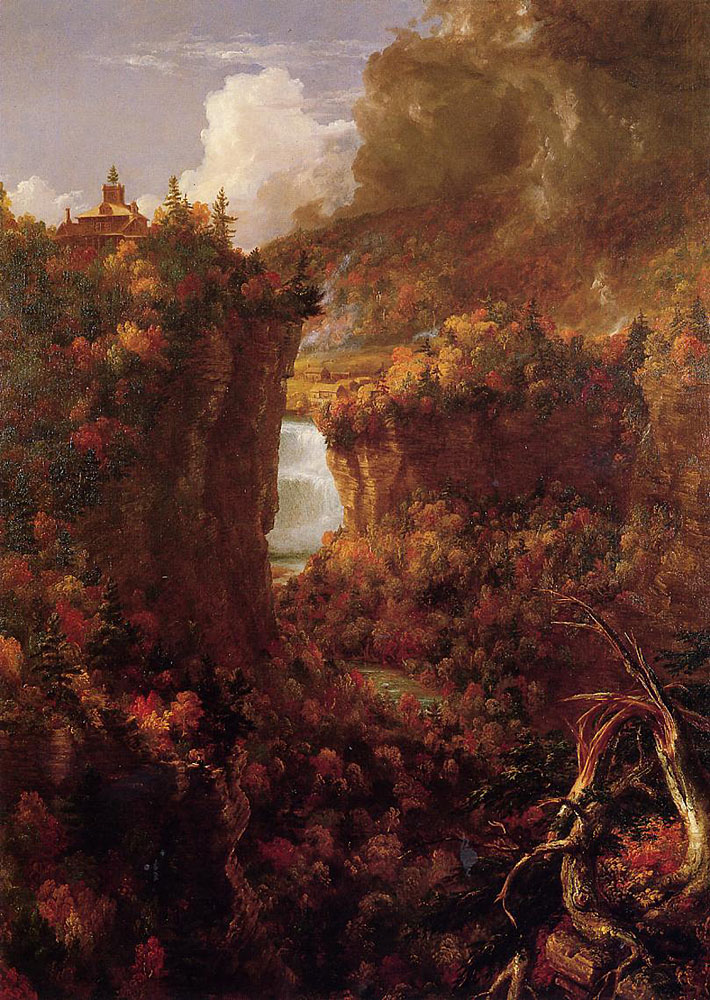
Thomas Cole, “Portage Falls on the Genesee,” 1839. Courtesy: Emerson Foundation / Seward House Museum.
An important Thomas Cole painting (valued recently at appr. $20 million) owned by the Seward House Historic Museum in Auburn, NY is still under risk at being sold against the donor’s bequest.
The culprit is the Emerson Foundation, a private family charitable trust whose philanthropy focuses on education, arts cultural institutions, health and human services, and other similar civic and youth-oriented efforts. The foundation received the Seward House and its contents in a bequest from William H. Seward III, the original Seward’s grandson, in 1951, under which they were charged with the preservation and maintenance of the entire collection. However, in a clever move, when they transferred the property and collection back to the newly renovated museum in 2008, they retained ownership of the Cole painting. Were they expecting to use it as a liquid asset in case they decided they needed more money in the future? It seems quite likely, as 2013 news of its proposed sale would reportedly give the proceeds to “the Seward House and the Emerson Foundation” (emphasis mine).
The foundation decided in February 2013 to first remove Cole’s “Portage Falls on the Genesee” (1839) from view after statements of concern about the painting’s wellbeing and security in the small staffed museum. Lee Rosenbaum reported on this in September of 2013, when NY state attorney general sought to prohibit the sale of this painting on the grounds that it would go against donor William H. Seward III’s will. The painting was originally commissioned from Cole as a special gift to the original Seward, after which it was given a central place of honor in his home in Auburn. Its place up until two and a half years ago, in the home of the former governor who oversaw the construction of the Genesee Valley Canal that the painting commemorates, connects it with the history of the house and its illustrious resident, as well as with a significant moment in local and national history. Just how often is it that a work of art with such thoroughly known provenance and historic connection remain in its original housing for future generations to see and remember and learn? And how could it be argued that the “museum quality replica” with which it was replaced (and which likely also cost a pretty penny) could do this justice? Does that not strip away the very value of an original work of art and the artist’s hand altogether? Does that not throw a proverbial slap in the face of those tasked with caring for the House, whose responsibility it is to remind the public that history through objects is significant and unique and worth preserving? Is not the discovery of the original artist’s hand and brushwork the central reasoning through which museums all over the world garner millions of visitors to see the unique and authentic works in their collections?
This is a rather interesting predicament, because most cases of boards going against donor’s bequests are made with the argument that the collection needs those proceeds to survive. However, according to a 2013 review of the Emerson Foundation’s most recent tax return, the attorney general’s office found that:
“the Foundation is financially able to continue to provide the necessary financial support for the memorial. Accordingly, we do not see any justification for the sale of the Painting or why the Painting has not yet been transferred to the Seward House Museum.”
Imagine that! What could the foundation possibly be interested in doing with the millions in proceeds? Is it not a bit ironic that the museum board’s reasoning for its removal from public view (it is now in a private, undisclosed location) was that the small museum – which the foundation was still tasked to provide resources for – did not have enough resources to ensure “its long-term security and proper care”? The Board provided this statement in 2013 as to its support of the foundation’s proposal to sell the painting via Christie’s:
(1) Concerns over the safety and security of the painting as its value became more publicly known, and the liability of the Seward House if it could not properly maintain the painting; and
(2) Proceeds from the sale of the painting would contribute to the long-term financial viability of the Seward House and advance its mission of preserving the Seward legacy.
Where will this money go? Will it actually go to possibly helping securing the museum’s financial future? Or will it go to the Foundation at large? There is no certainty with which the board nor the foundation has stated this. However, we hope that this will not turn out to be like the disasters that happened to the Barnes or Burrell Collection. Is not the motive quite clear?
As of June 2014, the lawsuit against the museum and foundation’s administration of the Seward Estate was dismissed in NY Appellate Court. The decision has yet to be made, however, regarding the return of the painting to the museum and until then, the foundation is apparently holding it in limbo. Has the foundation been waiting years for the fury to die down so they can get the sale approved without public knowledge? A recent news story in Auburn proves otherwise. Local residents are still infuriated and are calling for an end to this stand-off:
“[…] as we approach the two-year anniversary of that filing, the same sad state of affairs is in place. “Portage Falls on the Genesee” is in an undisclosed, non-public location. A reproduction hangs in its place. And the public is being deprived of the ability to see a piece of art that holds a high place in our city, state and nation’s history.
The status quo cannot be allowed to stand any longer. Judge Thomas Leone should grant the attorney general’s September 2013 request.
And the Seward House Museum and Emerson Foundation should be planning for how it can put the painting back on display in a secure manner.”
We have recently contacted the staff and board president at the Seward House with questions, but have not yet heard back.
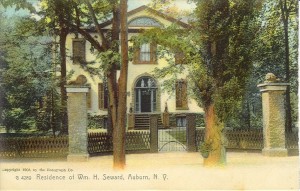
Postcard of the Seward House, 1905. Courtesy: Seward House Museum.


